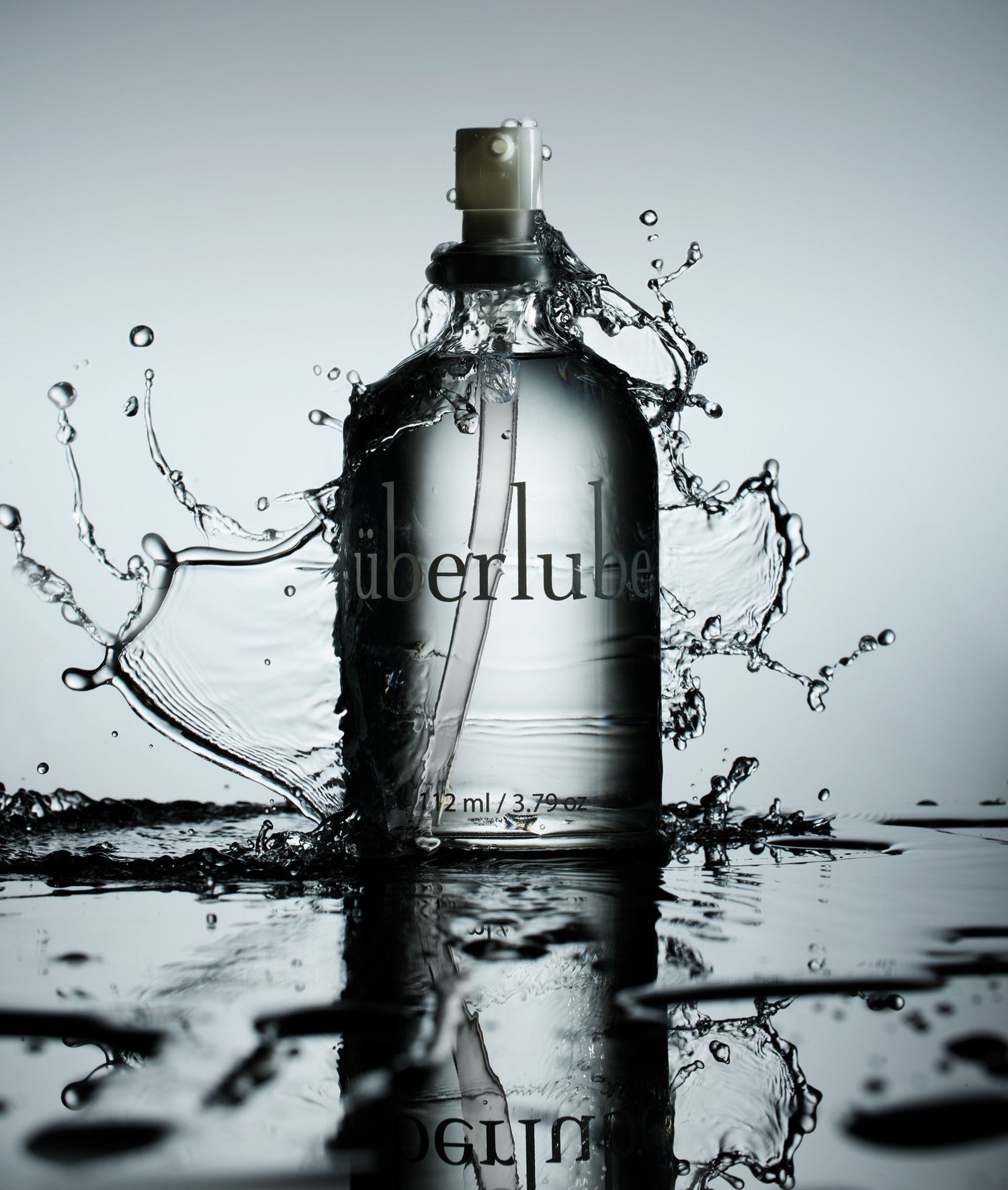
Health & Wellness
The 411 for “The Vaginal Dryness 911”

$0.00

Understanding the Causes and Solutions for Menopausal Vaginal Dryness

Ask menopausal women what is the first word that comes to their minds when you mention the word DRY? You will be surprised at the answers. Here are a few of the more popular answers I received when I asked this informal question in my menopausal center.
“My husband has a dry sense of humor… its really annoying”
“My skin is really dry and wrinkly… Menopause is the worst!”
“I like my martinis dry… really dry”
Not a single woman mentioned vaginal dryness! Talking about the vagina is taboo in our society and it’s not surprising that even at the gynecology office the topic of vaginal dryness often goes unrecognized and unreported. Many communication barriers exist including a clinician reluctance to discuss to sexual symptoms such as painful intercourse, as well as reimbursement concerns and perceived complexity of the therapeutic interventions. Women, on the other hand, may be embarrassed or concerned about how they will be evaluated and may worry about treatment safety.
Vaginal dryness not only occurs in the mature women! Women who breast feed, those taking certain medications (believe it or not up to 300 medication cause dryness including allergy medications and combined oral contraceptives), and those who suffer from a variety of medical conditions (lupus etc.) all may experience vaginal dryness.
With the end of menstrual cycles and the beginning of menopause, a wide variety of symptoms can occur. While most women recognize and associate hot flashes, with this stage of life, few make the connection of vaginal dryness with menopause. It is estimated that approximately 50% of menopausal women will experience distressing chronic and progressive symptoms of vaginal dryness. If left untreated the woman will undoubtedly experience a constellation of troublesome symptoms.
Women may experience a variety of symptoms that may signal that they are suffering from vaginal and vulvar atrophy. Some of the more commonly reported symptoms include:
Besides the troublesome symptoms listed above, a menopausal woman with vaginal dryness and atrophic tissue changes may also experience increased incidence of urinary tract infections and their associated symptoms (dysuria (burning when you urinate), bad odor during urination, frequency (urinating all the time), urgency (strong need to urinate), nocturia (urinating at night) or hematuria (blood in the urine). Symptoms consistent with other pelvic infections like cottage cheese like, green/foul or yellow discharge may also signal some vaginal changes of menopause. This is so because other common vaginal infections like bacterial vaginosis and candidiasis maybe more common with menopausal atrophic vaginitis.
There have been a variety of surveys that ask menopausal women this question. Two popular ones are worth discussing.
The VIVA Study (Vagina Health Insight Views and Attitudes) was an international on-line survey which assessed the impact of vaginal changes and discomfort on overall quality of life. Some remarkable USA findings include:
The REVIVE (Real Women’s Views of Treatment Options for Menopausal Vaginal Changes), is the largest US woman survey which surveyed over 3,000 women with symptoms of VVA
The bottom line: Women are suffering in silence from the symptoms of vaginal dryness and they should be proactive in getting help for these bothersome symptoms.
But before we venture into treatment, lets backtrack a bit and discuss some of the biological and anatomical changing that are occurring. The healthy vagina loves hormones especially estrogen and the normal vagina has a lush pink, appearance which has many ridges and folds with lots of elasticity and stetchability. Unfortunately, with the loss of hormones, the vagina and tissues may become dry and pale. The vaginal lining or mucosa might appear flat and blanched, stiff or rigid.
A pelvic examination can reveal a pale, smooth, thinned epithelium that is extremely fragile. Your health care professional may include a simple acid/base test with pH paper to assess the vaginal environment. As with many conditions, there are multiple methods to effectively treat signs and symptoms of the disease, some conservative, some more aggressive in terms of therapeutic intervention. In the instance of vaginal dryness topically applied vaginal moisturizers and lubricants have gained popularity due to their ease of use, cheap cost and over the counter accessibility.
Moisturizers Maintain: they help maintain the vaginal integrity and soothe from the outside in. What this means that they can and have been shown to be somewhat effective as front line treatment for the treatment and management of vaginal dryness but they often do not change the underlying architecture of the vaginal tissues. The liberal use of local nonmedicated, nonhormonal vaginal moisturizers can provide relief for the symptoms of vaginal atrophy. Most of these agents are recommended for use two or three times weekly but they can be tailored to the individualized needs of the woman and her specific symptoms.
Lubricants Lovemaking: Lubricants are used for intimacy during sexual activity) and there are made to help sex be more comfortable. In addition, over 50% of couples may use sexual lubricants as a method to enhance their sexual pleasure. There are many different types of lubricants currently on the market, ( water, silicone, petroleum based, hybrid) and some newer products may offer glycerin and paraben free options. Others are organic, and fragrance free.
Prescriptions: Your health care professional may recommend a prescription medication that can help restore, revive and replenish the vaginal mucosa. We know that minimally applied local hormones, or oral pills for vaginal dryness are effective and may have far reaching secondary effects on genital or pelvic anatomy. Using a prescription does not preclude you from using both a moisturizer and or lubricant.
A word of caution about the kitchen pantry solution:
Some women have opted for the kitchen pantry solution, choosing their favorite cooking oil (coconut oil, avocado oil, peanut oil or extra virgin olive oil) that have begun inserting these products in their vaginas. Proceed with caution: there is emerging evidence that some of these products may indeed work but may predispose the woman to more serious vaginal infections.Keep the pantry products for your pasta!
Be Empowered
Women should be methodical and read labels carefully. Focus on ingredients and be aware that not all vaginal products are created equal. Ingredients matter! Hyaluronic Acid has gained popularity as a common ingredient in vaginal products since it is a molecule naturally found in the body and plays a large role in hydration. It has the ability to retains 1000x its weight in moisture and has been used extensively in other areas of medicine including to treat osteoarthritis and joint stiffness. It also has been used to treat damaged and aging skin.
Many products are marketed as “natural” yet have harsh chemical additives. It may be wise to avoid products with smells, fragrances, colors and warming compounds, bactericides or spermicides that often have the potential to damage the delicate vaginal lining. Consider avoiding: menthol, parabens, glycerin, and Nonoxynol-9.
A woman is expected to live at least one third of her life in the menopause; The golden years should be symptom free. There is no need to suffer in silence. Safe, effective and easy solutions to vaginal dryness exist.
Slippery-smooth lubrication at your fingertips whenever you desire. Let überlube do the work. You get the pleasure.
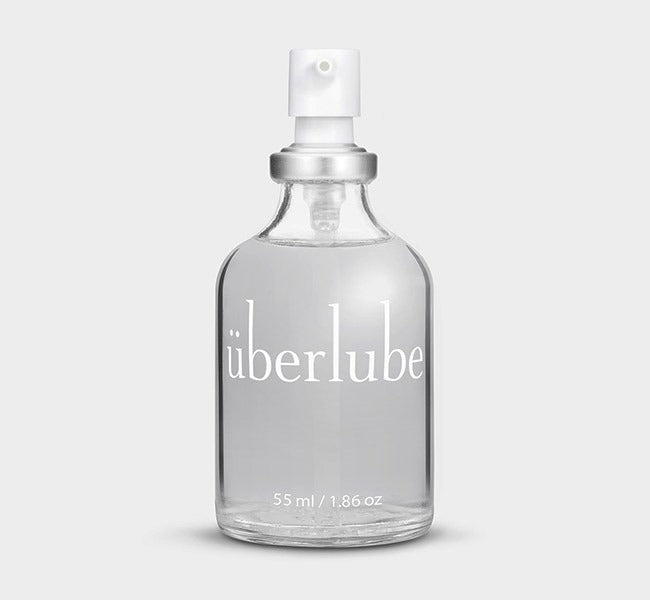
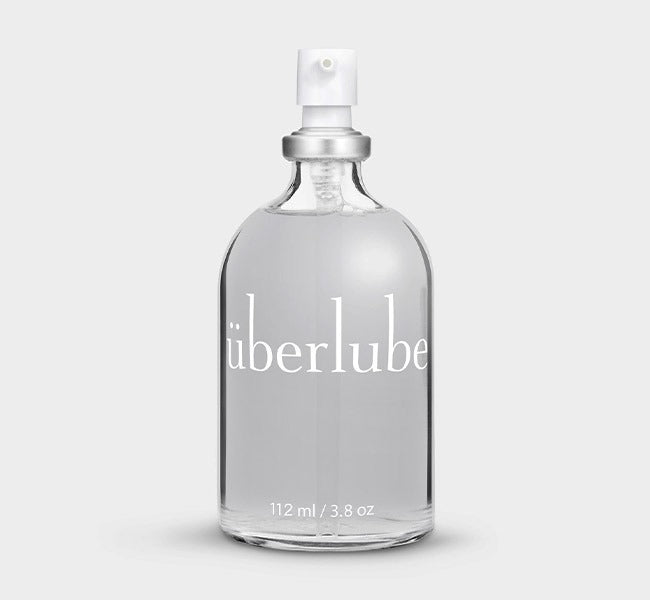
Empower joy with our signature bottle. The simple, yet elegant glass bottle looks handsome on your bedside table.
Überlube is uniquely designed to transfer sensation while safely reducing friction - never wet or sticky.
Couldn't load pickup availability

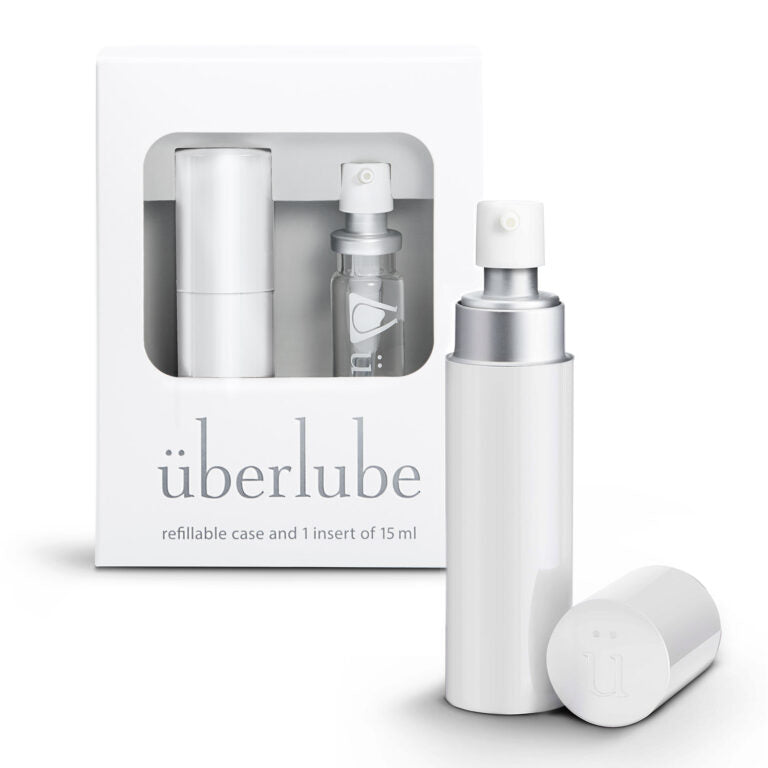
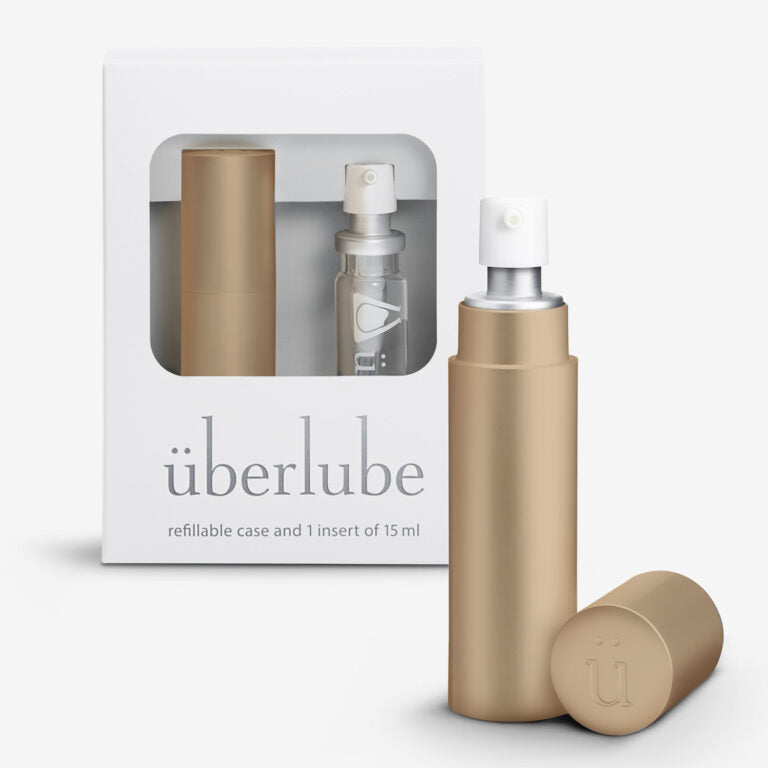
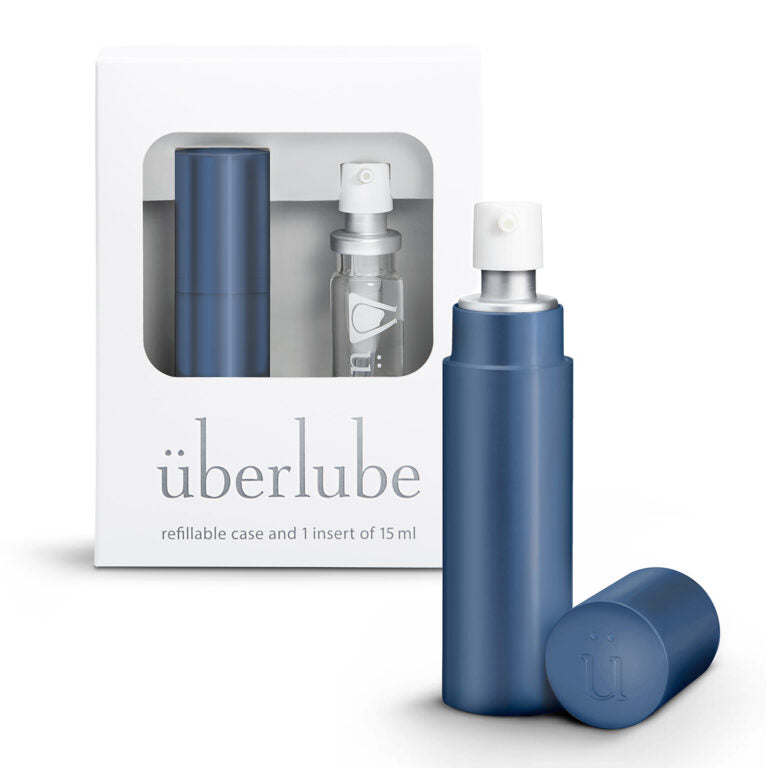
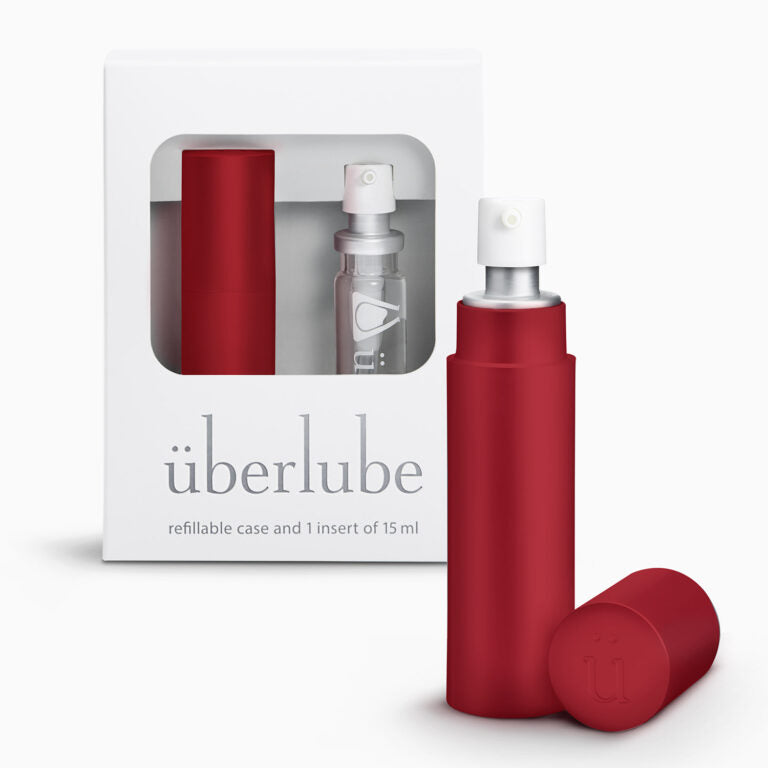
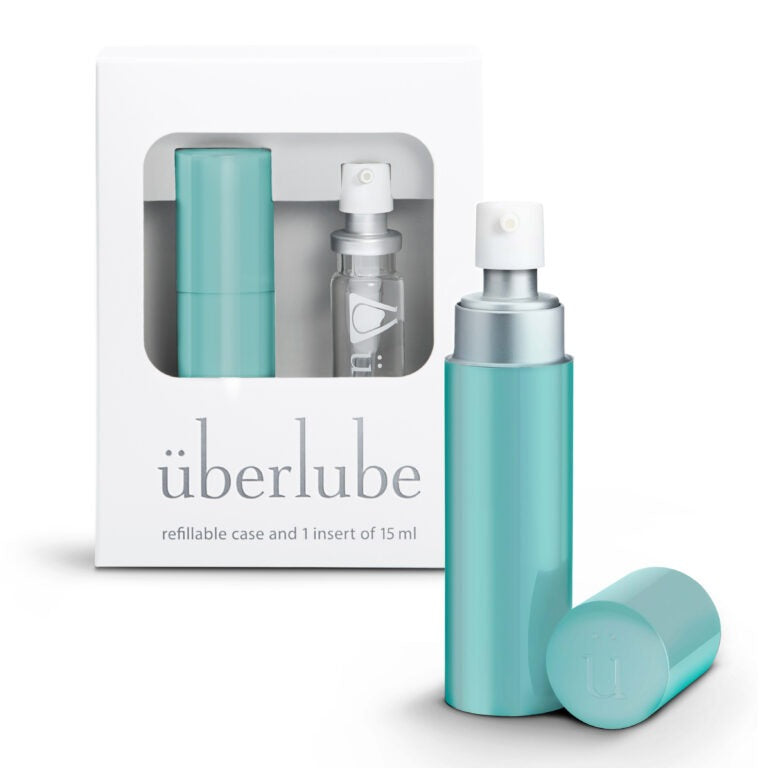
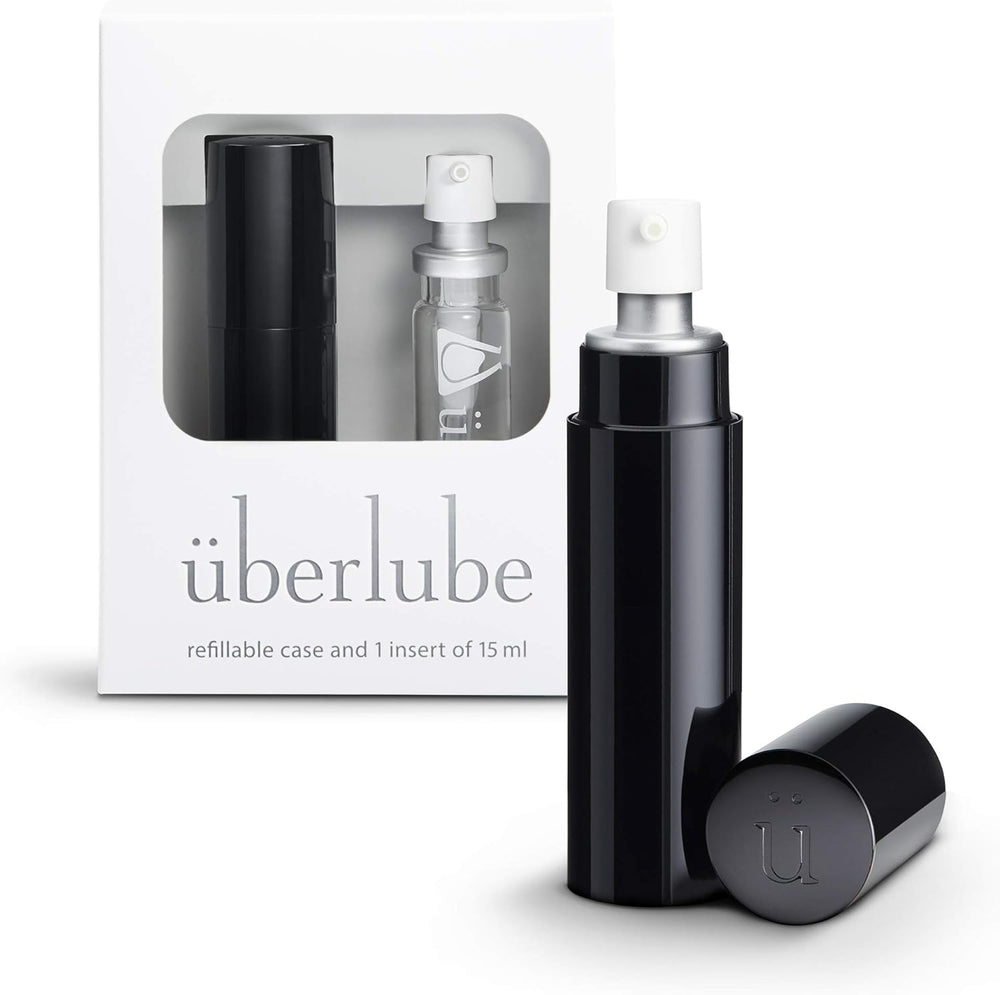
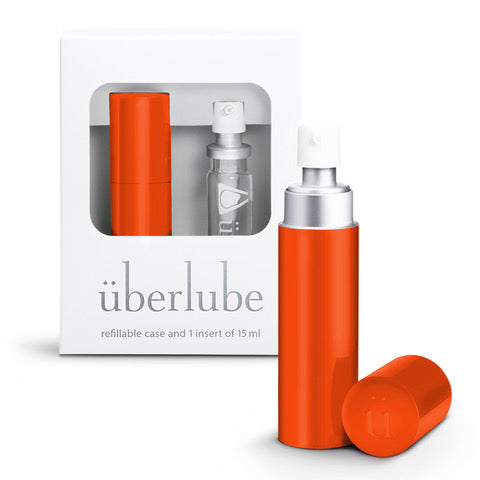
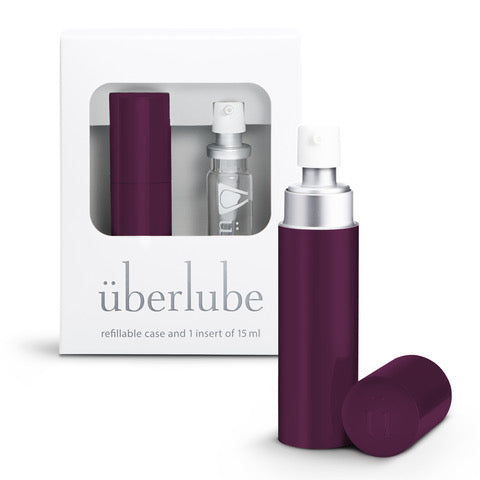
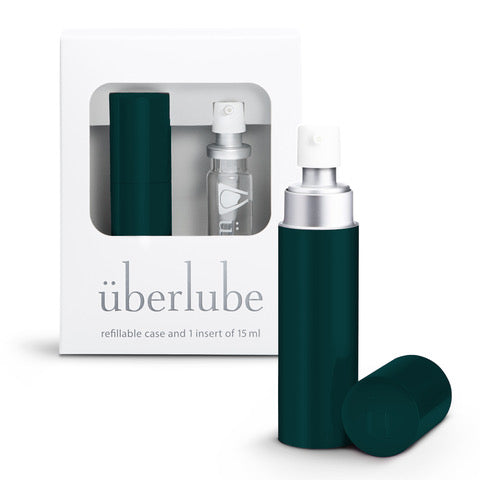
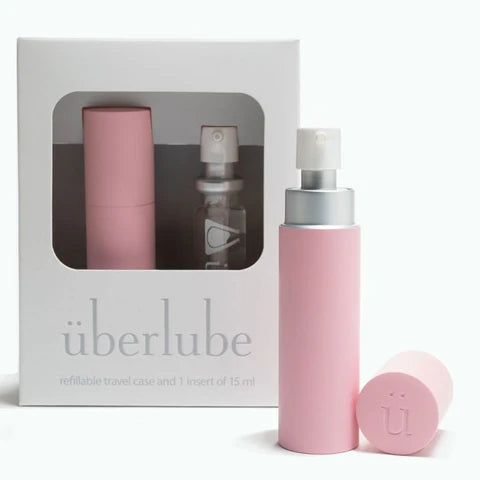
Perfect for your purse, pocket, gym bag, or carry-on luggage. Choose your favorite color. Refill the traveler case with specially-designed cartridges. Now you can have the joy of überlube at home and away.
Couldn't load pickup availability
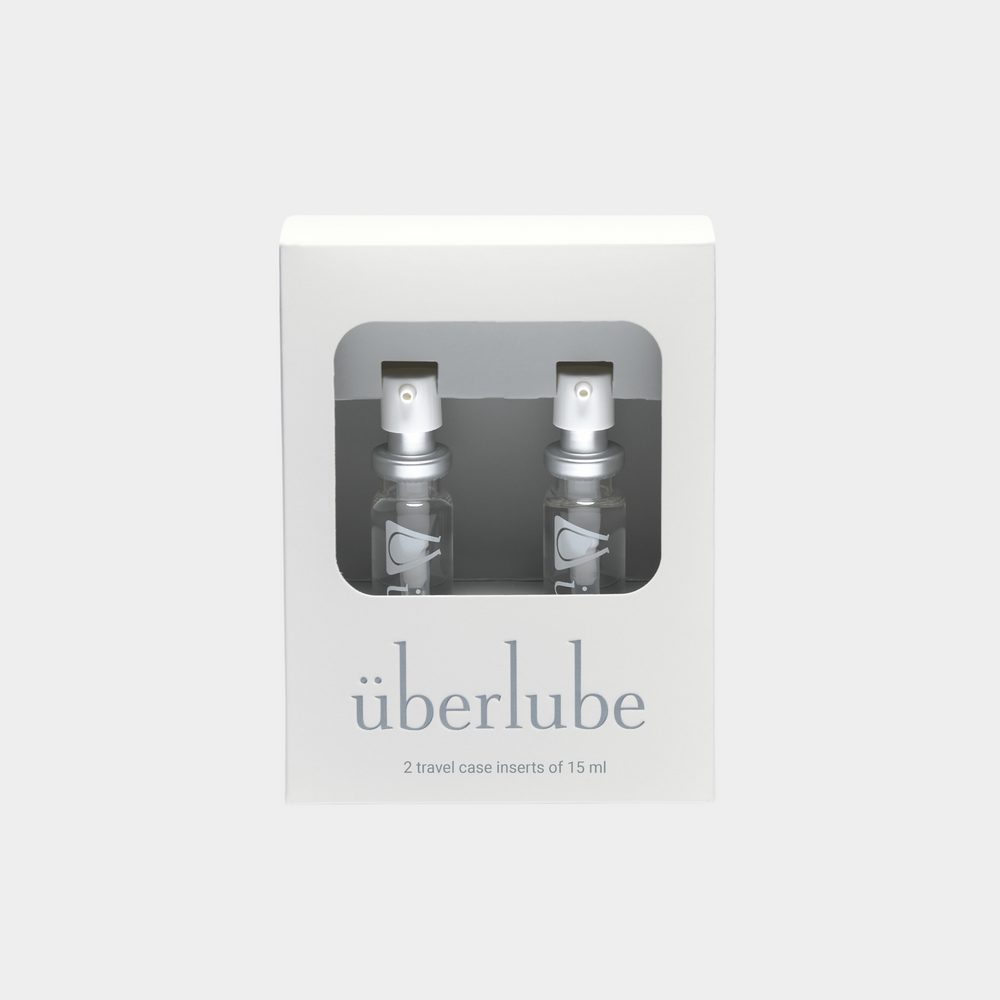
Glass refill cartridges for the Good-to-Go traveler. 2-15ml cartridges per pack.
Couldn't load pickup availability